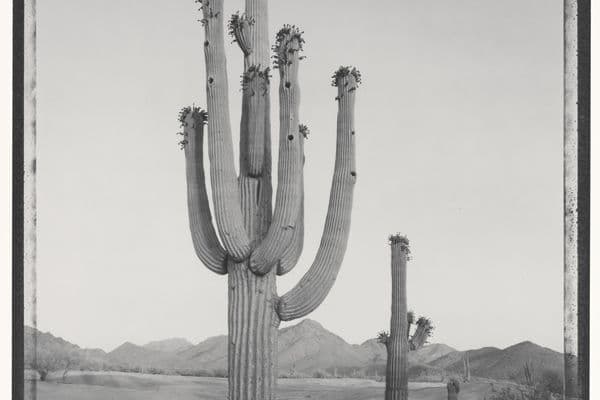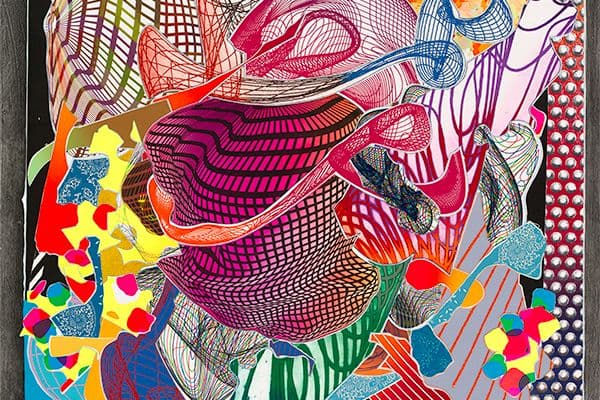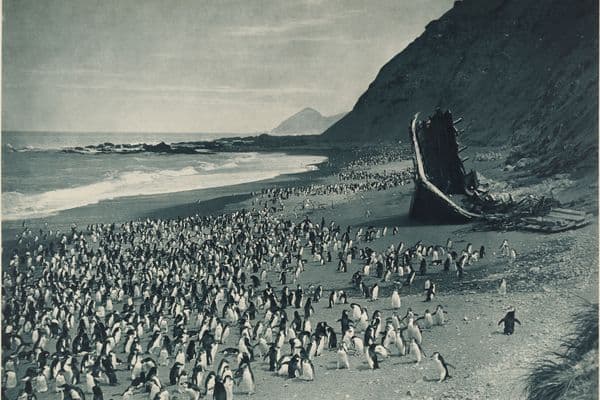Black Robe, White Mist
Art of the Japanese Buddhist nun Rengetsu
8 Sep 2007 – 27 Jan 2008
About
‘Clad in black robe,
I should have no attraction to
the shapes and scents of this world
but how can I keep the precept of detachment
gazing at today’s crimson maple leaves?’
(trans. John Stevens)
Black robe white mist: art of the Japanese Buddhist nun Rengetsu displays ceramics, scroll paintings and poem sheets created by Otagaki Rengetsu (1791–1875) and her close collaborators. Rengetsu, whose name evocatively translates as Lotus Moon, was a Japanese Buddhist nun. Her life was one of great suffering and unusual creativity largely borne out of necessity. One of the few successful female artists of her time, Rengetsu was most famous for her poetry and distinctive calligraphy, and also produced delicate scroll paintings and rustic ceramics.
Black robe white mist reveals the beauty of the understated and unconventional, and is significant as the first major exhibition of Rengetsu’s work to be held outside Japan. The contemplative exhibition features works of art drawn mainly from private international collections in Europe, Japan and America, as well as a number of scroll paintings and ceramics from Australian public institutions and the National Gallery’s own collection.
Curators: Robyn Maxwell Senior Curator Asian Art, Melanie Eastburn Curator Asian Art, Lucie Folan Assistant Curator
The National Gallery of Australia is most grateful for the generous support of the Japan Foundation and the Australia–Japan Foundation, particularly for enabling the production of a publication to accompany the exhibition. With essays by scholars and art historians, Black robe, white mist: Art of the Japanese Buddhist nun Rengetsu is the first English-language book to focus solely on the art of Rengetsu.
Themes
The life of Lotus Moon
Otagaki Rengetsu, Lotus Moon, was a Buddhist nun, poet, calligrapher, potter and painter. A renowned beauty, she led a life of adversity, self-reliance and undesired notoriety. She was born in 1791, probably to a courtesan – perhaps a geisha – and a samurai, and was later adopted by a lay priest of Chion’in, a Pure Land Buddhist temple in Kyoto.
As a child she studied waka poetry, calligraphy, dance, needlework and martial arts at Kameoka castle. On her return to Kyoto Rengetsu married. She was 17 when her first child, a son, died after only twenty days; two daughters followed but also died young. Taking the unusual step of divorcing her husband, she remarried happily only to be widowed at 33. Rengetsu then became a nun, taking the children from her second marriage to live at Chion’in. Tragically, within a decade her children and beloved adoptive father had died, and Rengetsu was forced to leave the temple and support herself.
She began creating simply-made ceramics adorned with her poetry. Rengetsu’s ceramics soon attracted a popular following and widespread imitation. She also painted poem sheets and scrolls, often collaborating with renowned artists. In 1865 Rengetsu settled at Jinkoin, Temple of Divine Light. Ten years later, aged 84, she died in the simple temple tearoom where she had lived and worked. Today, Rengetsu is still celebrated as one of Kyoto’s famous citizens in the annual Jidai Matsuri or Festival of the Ages parade.
Melanie Eastburn discusses Rengetsu’s personal and creative life in the opening chapter of the National Gallery of Australia’s publication Black robe, white mist: Art of the Japanese Buddhist nun Rengetsu, written to accompany this exhibition.
Ceramics and sake
Rengetsu’s ceramics are said to have been so popular during her lifetime that almost every household in Kyoto owned at least two or three examples. She started combining her poetry and distinctive calligraphy with tea ceramics when already in her late 40s or early 50s. Formed from pinched balls of inexpensive clay and incised or painted with verse, Rengetsu’s innovative pottery served as a form of meditation for the nun who remained prolific until her death. She also worked with other potters to fulfil the demand for her wares.
The artist made teapots, cups and other equipment associated with sencha, steeped leaf tea, and teabowls for matcha, whipped tea. Rengetsu also produced flasks and cups for sake rice wine. The latter she usually inscribed with lighthearted verse, since sake was consumed in celebration, including at the beginning of tea ceremonies.
'Enjoy delicious sake
without overdoing it
and it becomes
an elixir that eases
old age and death'
(trans. John Stevens)
By the nineteenth century, sake was enjoyed by people from most levels of society, although it also retained an older ritual role. The lively combination of sake and poetry composition has been popular in Japan for centuries.
In Black robe, white mist: Art of the Japanese Buddhist nun Rengetsu, Sandra Sheckter’s chapter examines Rengetsu’s ceramics, while Meher McArthur explores her sake wares, as well as sake culture in 19th century Japan.
Collaboration
Rengetsu created collaborative works of art, gassaku, with painters including Mori Kansai, Kishi Chikudo and Murase Soseki. Some of her most successful collaborative works were created with close friends Tomioka Tessai and Wada Gozan, also known as Gesshin (Moon Mind). Often playful in spirit, such works stem from a tradition of paintings created by two or more artists to mark special occasions and celebrate friendships. In another application of gassaku, Rengetsu and Gesshin created 1000 images of the bodhisattva Kannon, the Buddhist embodiment of compassion, to support victims of flood.
Rengetsu sometimes commissioned Tessai to paint particular subjects to complement her poems. Similarly, collaborating with potters including Kuroda Koryo and Isso enabled her to keep up with demand for her ceramics, and was more commercial than the true gassaku. Both potters emulated Rengetsu’s style. Kuroda, who became known as Rengetsu II, even had the nun’s permission to sign her name on his work and continued to do so after her death. Unconcerned with money beyond her basic needs, Rengetsu was also known to have helped make the works of others more saleable by inscribing them with her poems.
The collaborative scroll paintings of Otagaki Rengetsu are the subject of Sayumi Takahashi’s essay, the final chapter of Black robe, white mist: Art of the Japanese Buddhist nun Rengetsu.
Rengetsu and Japanese tea traditions
Rengetsu created vessels for two types of tea drinking – teacups and teapots for sencha, steeped leaf green tea, and large teabowls for serving matcha, powdered green tea, in the chanoyu tea ceremony. Chanoyu, the best-known Japanese tea ceremony, originated in Kyoto in the fifteenth century as an elite activity. Although it had become quite widely practised by Rengetsu’s time, many objected to its strict aristocratic formalities.
Sencha drinking was introduced by the Chinese scholar monks who founded the Obaku Zen sect in Japan in the seventeenth century. They drank the tea socially, as well as in ritual, partly in opposition to the pretension of chanoyu. By the nineteenth century, sencha too had acquired a chanoyu-style ceremony. Nevertheless, the educated, including women, continued to enjoy sencha in a relaxed manner. Its consumption frequently accompanied pursuits such as poetry composition and painting. Many of Rengetsu’s sencha wares were for informal use, with five cups rather than the six required for formal tea service. About the teapots she created for drinking sencha, Rengetsu wrote:
'Since I was poor, and there was nothing I could do, I dabbled with clay, making kibisho (sencha teapots). One at a time, they were very humble and the shapes were unrefined. The poems I carved on them I wrote when I had a moment free. I never had much free time.'
(trans. Lee Johnson)
The popularity of her unorthodox poetry-inscribed tea ceramics reflected a fashion for art created by the eccentric and scholarly.
Patricia J Graham introduces the Japanese tea ceremony, and the tea ceramics created by Renegtsu for both styles of tea, in her chapter in Black robe, white mist: Art of the Japanese Buddhist nun Rengetsu.
Poetry and Buddhism
Rengetsu studied waka – Japanese classical verse composed in a pattern of 5–7–5–7–7 syllables – while at Kameoka Castle as a child. The form was particularly popular with women during the Edo period, a time when women from all sections of society put ink to paper. Rengetsu used waka to communicate her emotions and observations. Inscribed in elegant, rounded calligraphy, Rengetsu’s words grace virtually every object she created, bringing an intimate presence to her works in clay and on paper. She wrote in her autobiography:
'The day begins
I’m busy with my crafts
the day ends
I pray to the Buddha
and I have nothing to worry about.'
(trans. Lee Johnson)
Rengetsu became a nun of the Pure Land sect of Buddhism at the age of 33, following the death of her second husband. It was then that she took the name Rengetsu, meaning Lotus Moon. After years of moving around the Kyoto area, she spent her final decade at Jinkoin, an esoteric Shingon Buddhist temple. Shaped by her faith, Rengetsu’s work combines the spiritual with the tangible but is rarely overtly Buddhist in its references.
'No place at the inn;
human beings have a
hard time in life I feel
but sleeping beneath the blossoms
and the hazy moon consoles me.'
(trans. John Stevens)
'This floating world’s
dust and dirt
flows away
and all is purified
by the waves of Kamo River.'
(trans. John Stevens)
Rengetsu’s poetry, and the influence and importance of Pure Land Buddhism in her life, are discussed by John Stevens in two chapters of Black robe, white mist: Art of the Japanese Buddhist nun Rengetsu. Dr Chiaki Ajioka then explores the complexities of translating Japanese poetry in the final section of Black robe white mist.
Touring Dates & Venues
- Hamilton Art Gallery, Hamilton, VIC | 20 February 2008 – 30 March 2008
- RMIT Gallery, Melbourne, VIC | 6 June 2008 – 28 June 2008











